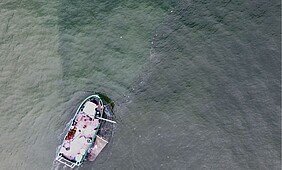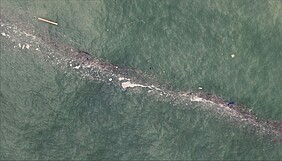Surveilling Ocean Plastic from Space
Becomes a Reality with Hydrological Insights!
A new work published in the respected scientific journal Nature Communications shows the idea of monitoring marine litter by satellite as a reality. This new technological development for detecting floating plastic pollution has been tested in the Mediterranean Sea. Using satellites currently in orbit, researchers achieved an unprecedented view of the emissions and accumulation areas of marine litter. The future implementation of a satellite sensor specifically designed for this purpose could increase plastic detection capacity twenty-fold.
Current satellites can only detect large, dense patches of floating debris, known as windrows, which form along convergence lines in the ocean. These detections indicate high pollution levels but raised questions about the practicality of a global monitoring mission based on these ephemeral patches. "We didn’t know if there were enough windrows to draw meaningful maps," notes Andrés Cózar from the University of Cádiz.
Funded by the European Space Agency (ESA), Cózar and Manuel Arias's team scanned the Mediterranean every three days for six years using Sentinel-2 satellites, identifying thousands of windrows. Automation with supercomputers and advanced algorithms made this possible, resulting in the most complete map of marine litter to date.
The study also highlights the role of hydrological factors. Associate Professor Aristeidis Koutroulis of the School of Chemical and Environmental Engineering at the Technical University of Crete found that torrential rains and coastal currents significantly affect litter distribution, creating pollution hotspots. For instance, heavy rainfall in north-western watersheds leads to more plastic pollution in the Mediterranean.
The tool is now ready for global use, promising insights into litter sources and pathways. Further improvements, especially in sensor sensitivity, could enhance detection capabilities significantly. Monitoring marine litter from satellites is not only feasible but holds promise for addressing issues beyond plastic pollution, like oil spills and search and rescue operations.
More in the original paper:
Andrés Cózar, Manuel Arias, Giuseppe Suaria, Josué Viejo, Stefano Aliani, Aristeidis Koutroulis, James Delaney, Guillaume Bonnery, Diego Macías, Robin de Vries, Romain Sumerot, Carmen Morales-Caselles, Antonio Turiel, Daniel González-Fernández and Paolo Corradi. Proof of concept for a new sensor to monitor marine litter from space. Nature Communications 15, 4637 (2024).




















